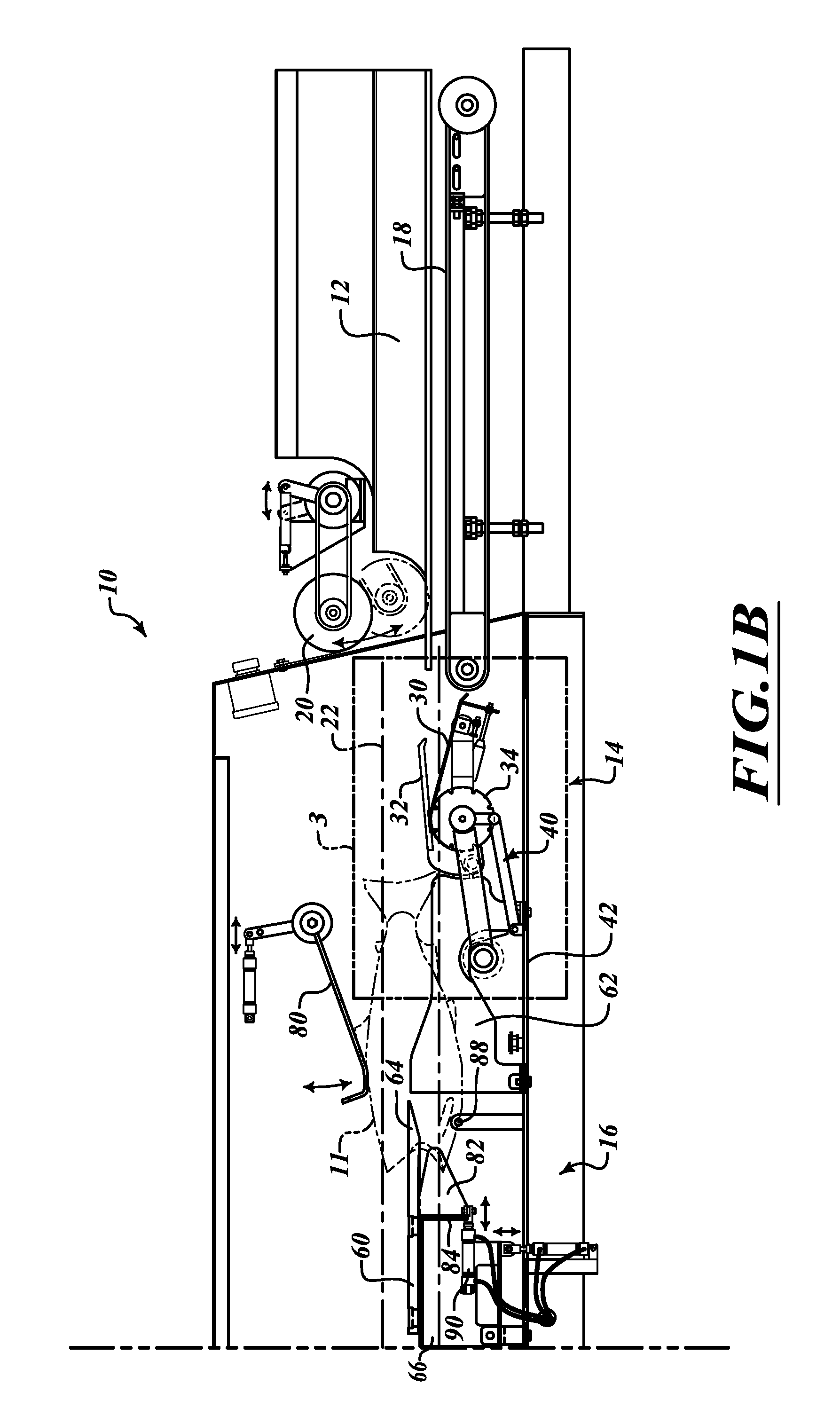Fish processing system and method
a processing system and fish technology, applied in fish processing, butchering, food science and other directions, can solve the problems of weak connection of viscera to vent, easy to break, and greatly diminish the value of roe, so as to achieve efficient and reliable cleaning and effective cleaning of the cavity
- Summary
- Abstract
- Description
- Claims
- Application Information
AI Technical Summary
Benefits of technology
Problems solved by technology
Method used
Image
Examples
Embodiment Construction
[0039]In the following description, certain specific details are set forth in order to provide a thorough understanding of various disclosed embodiments. However, one skilled in the relevant art will recognize that embodiments may be practiced without one or more of these specific details. In other instances, well-known structures and techniques associated with fish processing systems and methods may not be shown or described in detail to avoid unnecessarily obscuring descriptions of the embodiments. For instance, well known conveying systems may be used to transport fish through the various fish processing systems and devices described herein, such as, for example, opposing conveyor belts which are pressed into contact with the fish by tensioning rollers disposed along a fish transport path. Drive and control systems may be provided with the conveyor systems to selectively control a speed with which the belts move and thus a rate at which fish are processed.
[0040]Unless the context...
PUM
 Login to View More
Login to View More Abstract
Description
Claims
Application Information
 Login to View More
Login to View More - R&D
- Intellectual Property
- Life Sciences
- Materials
- Tech Scout
- Unparalleled Data Quality
- Higher Quality Content
- 60% Fewer Hallucinations
Browse by: Latest US Patents, China's latest patents, Technical Efficacy Thesaurus, Application Domain, Technology Topic, Popular Technical Reports.
© 2025 PatSnap. All rights reserved.Legal|Privacy policy|Modern Slavery Act Transparency Statement|Sitemap|About US| Contact US: help@patsnap.com



